If you want to get somewhere fast, you have to be Agile!
That’s the core value of Agile product development methodology.
98% of the companies that use Agile models have found Agile adoption helpful.
If you’ve ever wondered what’s the hype all about?
We’ve got some interesting answers for you in this article.
Let’s dive right in:
What is Agile Product Methodology?
Agile product methodology is a practice which promotes continuous development and testing of a software or product throughout the product development lifecycle. In this approach, both the development and testing activities remain concurrent.
Agile approach is known to be one of the most effective and simplest processes to turn a vision for a product into software solutions.
In simpler words, Agile is a term used for describing product development approaches that require continual planning, team collaboration, improvement, early delivery, and evolutionary development. One of the reasons Agile is gaining popularity is it encourages flexible responses to change.
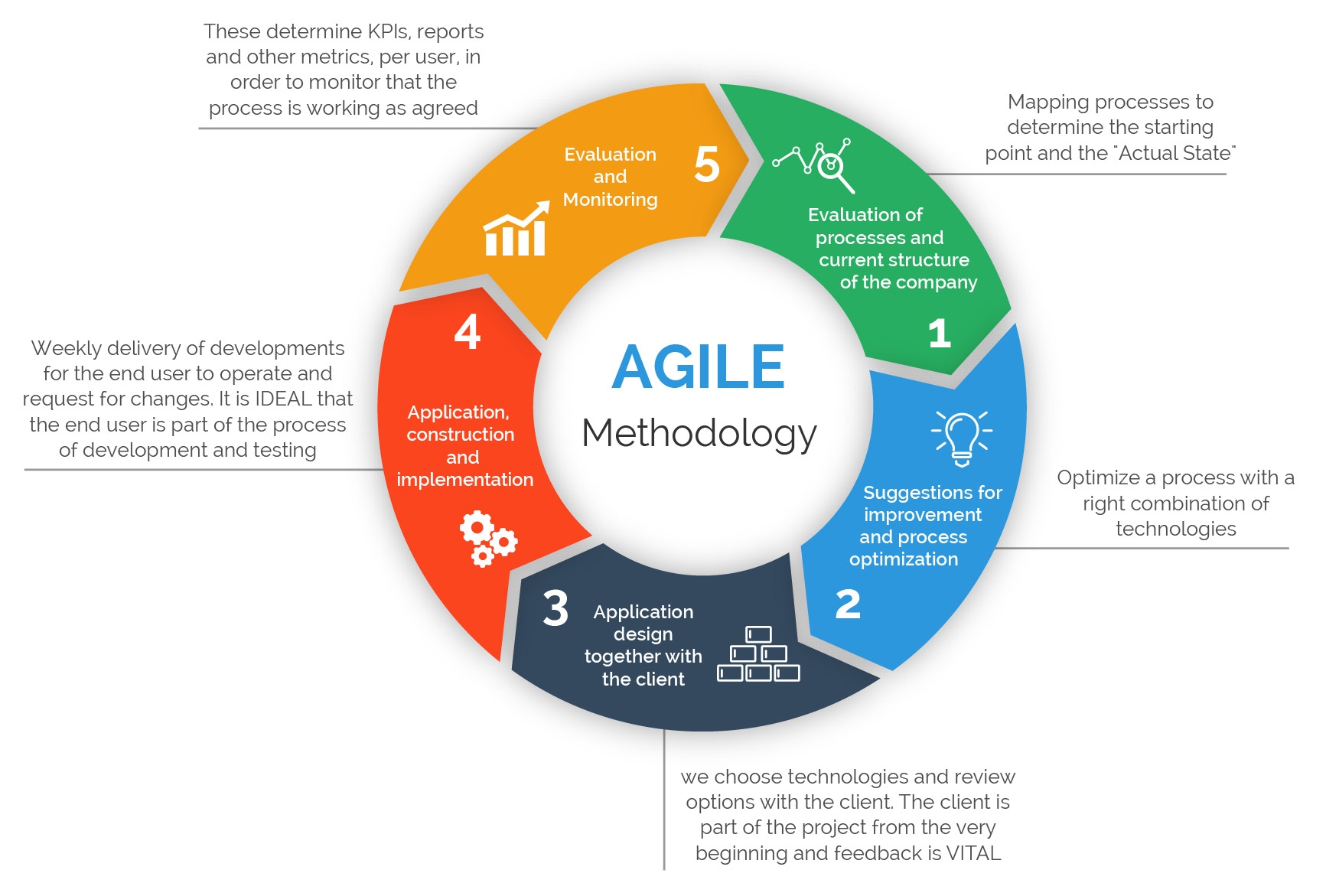
- Agile Methodology (Source: 360logica.com)
Agile Development Statistics:
- 85.9% of software developers around the world use Agile product methodology
- Companies that use Agile approach for software development gain 60% more profits than those who don’t.
- Agile success rates are more than 1.5x higher than those of Waterfall projects
- According to Agile adoption statistics, plenty of Fortune 500 companies have adopted Agile
Agile Product Methodology Vs Waterfall Model
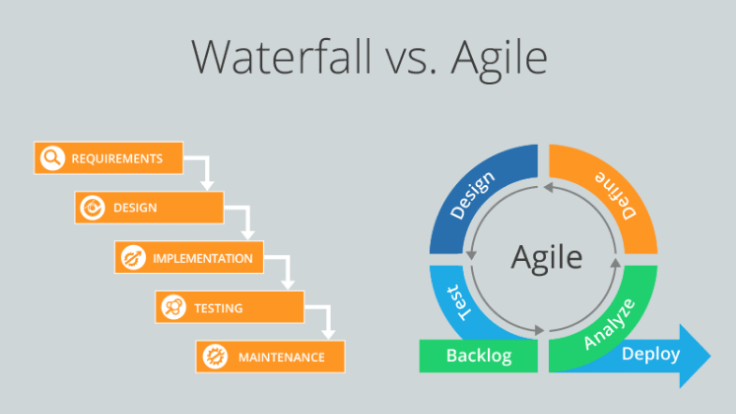
- Waterfall vs Agile (Source: ouriken.com)
Waterfall and Agile are two different methods for product development processes.
The most important difference between Agile and Waterfall is the fact that Agile entails assessment of product all through the development lifecycle, whereas the latter has limited scope. To better understand these two, let’s review into their key features.
Waterfall Approach
1. In the Waterfall approach, product development flows sequentially from one point to another; just like a Waterfall filling the next reservoir.
2. Using Waterfall development means customers will see the product only at the end of the project
Waterfall method is considered to be more secure because it is plan oriented.3. In the Waterfall method, errors are tested only when the whole product is ready. So, if changes are to be made, the product development has to start from the beginning.
4. In the Waterfall method, product developers and testers work separately.
5. All features of a software or product are delivered at once, at the end of the project, and after the long implementation phase.
Agile Approach
1. Agile method follows incremental approach to product development.
2. Agile method promotes early launch of products. Customers get early and frequent chances to use the product. This helps product development teams in making decisions and do necessary changes to the product.
3. Agile method is comparatively unstructured as compared to the Waterfall method.
4. Agile allows product development teams to fix errors in the middle of the project. Within this method, teams continue to test products throughout the product life cycle and gain useful feedback from the customer.
In the Agile method, both testers and product developers work together.5. In Agile product development mode, core features of a product are delivered to users, and new features are added over time.
Agile Methodology Advantages
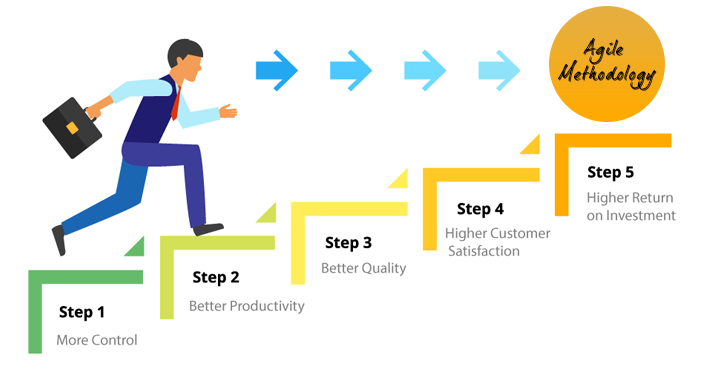
- Valuable Benefits of Agile Methodology (Source: denysys.com)
The above section would have given you an insight on Agile methodology advantages. If not, let’s do a quick review:
Put simply, Agile is:
- Iterative – involves regular rhythms of work
- Incremental – requires product development teams to present product increment
- Faster: It ensures faster reach to the market
- Cost-Efficient: Agile reduces cost of development by allowing product development at the same time teams gather requirements and information
- Responsive: product teams can respond immediately if there’s an unpredictable scenario and revamp the product accordingly.
How to Use Agile Methodology in Product Development
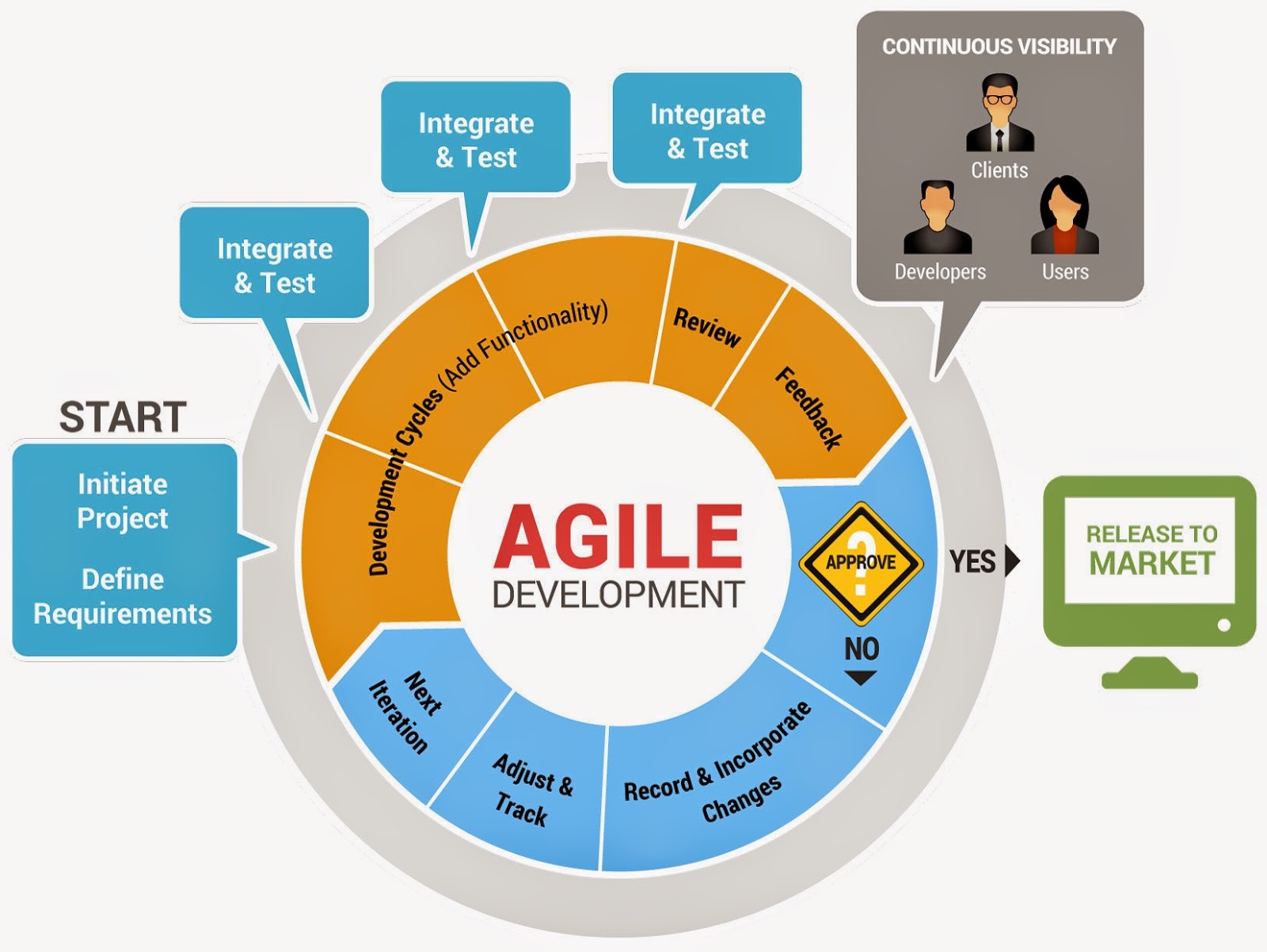
- Managing the Agile Product Development (Source: educore.org)
The Agile model applies well in software development. We are seeing more and more applications of this method in broader product development and in different departments. Agile teams follow these steps to create products:
1. Project Initiation: The first step in the life cycle of Agile product methodology is project initiation. This stage is often referred to as the envision or the inception phase where the team members discuss the product’s key features and ROI justification.
Agile product development always starts by documenting a vision statement on the basis of scope of problems the product can solve, defining opportunities, and values to be addressed. Apart from this, it starts by defining the users. So, the product owner documents all this and works with multidisciplinary teams for delivering on the vision.
2. Create Backlogs: The backlogs in product development refer to the list of work that needs to be done. These are mainly requirements that should be fulfilled, in order of priority.
Prioritization is a key point in agile backlog grooming because it enables teams to adjust their scope of work, review costs that will be incurred, and schedule tasks of team members. All of this helps the product development teams to accomplish time-bound tasks.
Remember that backlogs aren’t fixed. As the product life cycle continues, it is subjected to change, depending on the time interval between sprints or evaluations.
3. Establish Sprints for Software Development: Instead of delivering the whole backlog at the end of product release, project managers can divide the product into iterations (or sprints). Sprints are a smaller number of deliverables that are taken from the backlog.
Sprints have smaller time frames that may last from one to four weeks – depending on a team’s performance capacity and experience. So, if you’re working with a team that hasn’t worked in an Agile environment, it’s best to consider sprints of one or two weeks.
During the sprints, the product development team works through a full development cycle to accomplish one milestone. One sprint might not result in a marketable release, so multiple sprints are needed to complete all backlog items.
The bottom line is you should start organizing your project into manageable segments – depending upon time and complexity. Segmenting the product development cycle into shorter and hyper-focused sprints will force your team to isolate more important issues and avoid falling down into a technical rabbit hole.
4. Product Development: Once the requirements have been defined and sprints have been set, the actual work begins. Agile product development focuses on delivering high quality products in sprints or incremental phases.
So, Agile product developers start building the first iteration of a product with a goal of having a usable product at the end of a specific number of sprints. This workable product is far from the final version and hence undergoes a number of revisions and hence it includes minimum functionality.
Teams can deliver in these sprints by:
- Ensuring team collaboration.
- Maintaining high-quality by following style guidelines.
- Adhering to priorities, scope, budget, and schedule of the project.
- Delivering working products however limited, at the end of sprint.
- Testing product throughout the development cycle.
Product development teams work over multiple sprints to progress from a minimal viable product to a fully functional solution. Hence, the teams are required to work through several iterations where the testing team also conducts tests after each cycle. Final testing is done by the quality assurance expert to check for bugs.
5. Production and Deployment: Agile encourages product developers to launch the product early in the market. Products can be released even with one or two features. So, after initial development and testing, the product is deployed, and it is used by final end users.
It is extremely important for Agile product developers to closely monitor customer feedback during these early stages for identifying defects or bugs misses during the testing phase.
We recommend a handover with relevant testing between the production team and support team.
Agile Product Development Processes (Framework)
Companies that use Agile product development methodology employ different frameworks for launching their product in the market to guide new product decisions and understand the potential users’ needs. So, within the Agile model, there are popular frameworks like Scrum and crystal framework that can be used by product development teams.
Check below for some popular frameworks to deliver successful systems:
1. Scrum: Scrum is one of the many Agile methodology frameworks that is used by Agile practitioners. When a company follows a scrum framework, they work on one feature (or a product or software) at a time.
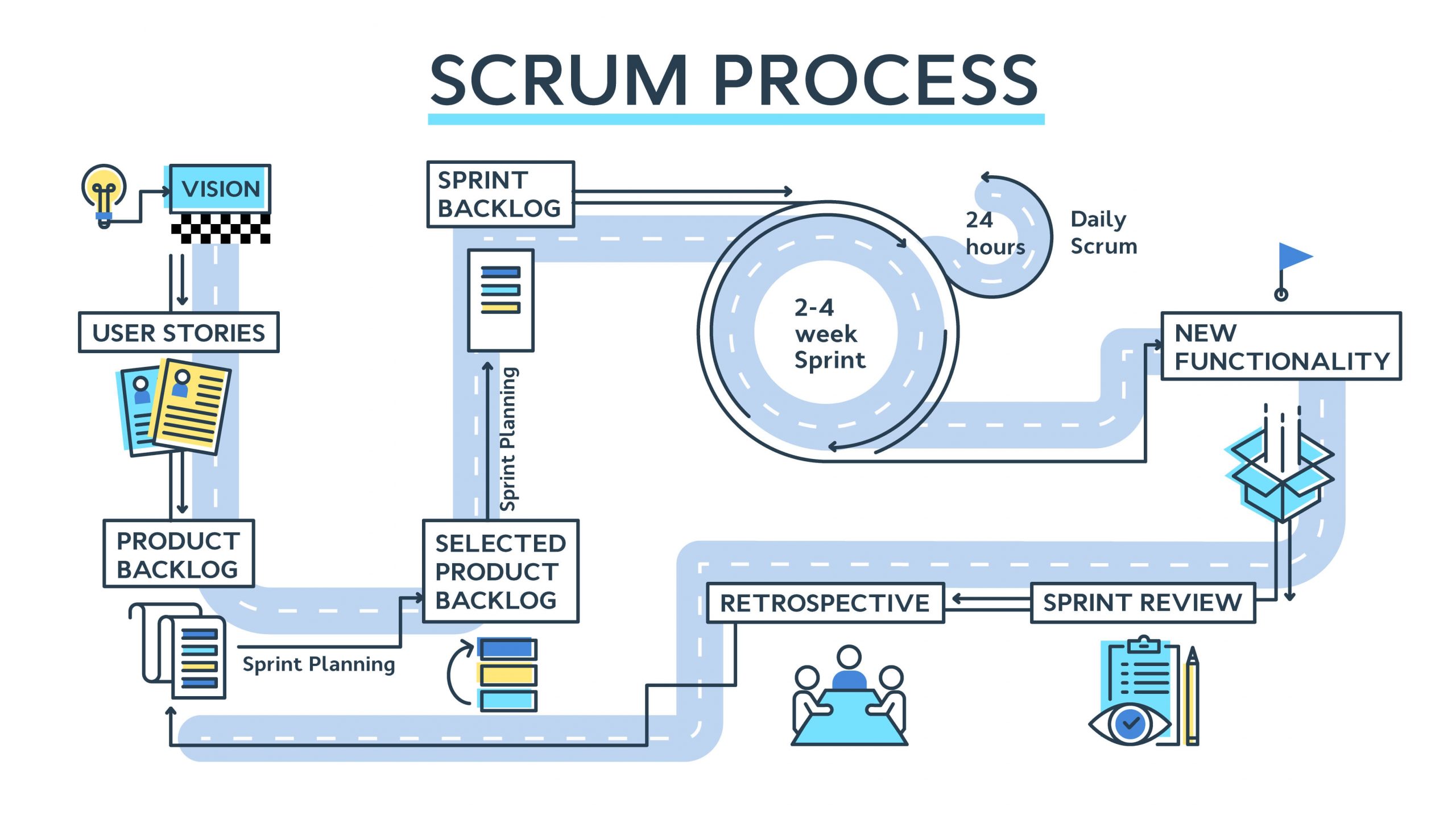
- SCRUM Process (Source: geekbot.com)
Scrum framework of Agile product development is as follows:
- Divide the product development into multiple feature work
- Conduct Analysis for Feature 1
- Design prototype for Feature 1
- Start Implementation of Feature 1 of the product
- Conduct Testing of Feature 1
- Release Feature1 as a working software
- Move to Feature 2
- Kanban
- Extreme Programming
2. Kanban: Kanban is an Agile model that seeks to keep work items from being stuck, blocked, or delayed. Teams that follow Kanban infrastructure work on fewer items at a time and thus reduce the time spent in the development stage.
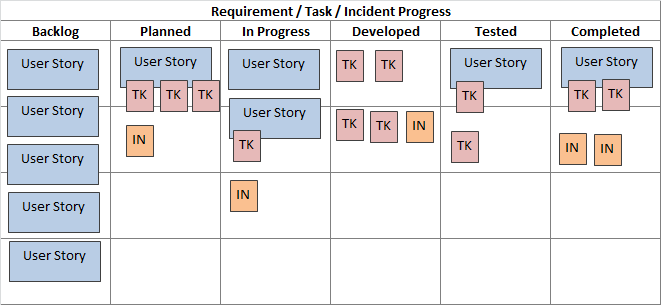
- Agile Kanban Methodology (Source: inflectra.com)
Kanban framework of Agile product methodology has following guidelines:
- Limit Works In Progress: Kanban limits the number of items (features or tasks) in development, so you focus on limited tasks at a time.
- Visualize Workflow: With Kanban, teams put all work items on a wall and use columns to denote their status.
- Manage Flow: Kanban framework allows teams to analyze points at which items get stuck, blocked, or slowed down so teams can review bottlenecks.
- Improve Collaboratively: Continuous teamwork and improvement are important concepts in Kanban.
3. Extreme Programming (XP): Extreme Programming is an Agile framework that emphasizes on the quality of practice of the product developer. It encourages developers to use test-driven development, where developers write the code for a test that a feature should validate before proceeding. Its main guidelines are as follows:
- Developers adhere to coding standards
- Developers write code in pairs.
- Work is done in short iterations sprints
- Minimal architecture is involved to build the usable feature
- Emphasized collective ownership and collaborative work
Case Study of Agile Methodology
Hope you have a good understanding of Agile methodology by now. Let’s use our learnings to see how Company X – a food delivery startup – can develop three features by following Agile methodology and Scrum framework.
The five steps Company X needs to follow are:
- Ideate
- Design
- Implement
- Test
- Deploy
Feature 1: Review & Rate Restaurants: During the ideation phase, the product team shall discuss how to build a simple interactive app where people have options to like or dislike and give ratings.
After ideation, teams should go ahead and design this specific feature. They can collaborate to discuss animation and design elements.
Next, developers should implement the simple rating feature. And give the beta version to the internal team for testing and receiving feedback.
In the next iterations, they should continue testing, deploy the product with rating features such as review for individual food items, restaurant, and review with photos.
Feature 2: Search Restaurant & Dishes: Now to add more features, Company X needs to follow the same framework. Again, an interactive prototype needs to be created. Before this, development teams should discuss the idea of enabling a feature that allows users to search for restaurants and dishes in their area.
The design elements and requirements need to be discussed and backlogs should be created. The product team will then begin to work on the design and initial version of feature.
As the development starts, more usability and stress testing can be conducted simultaneously until the feature is finally deployed.
Feature 3: Order Online: Since two features are already in the market, Company X can now work to give more features to their users. Since feature 2 allows users to search for nearby restaurants, now feature 3 can be released to order online from those restaurants.
Here again, the team needs to move from ideation to deployment phase and work together in sprints while taking inputs from user research data and feedback.
Wrapping Up
If you just remember that Agile product development methodology is about adapting to changing conditions, working in sprints to release products earlier in the market, and producing working results, you’ve learned what Agile methodology is all about.
Companies that use the Agile method are witnessing explosive growth. So, what are you waiting for?
If you’re a startup, we recommend getting started with Agile adoption. After all, Agile product development and startups go very well with each other.
Business & Finance Articles on Business 2 Community
(54)







